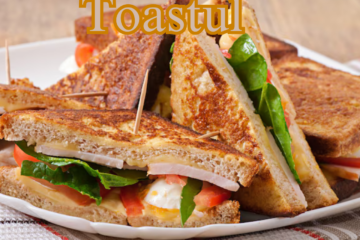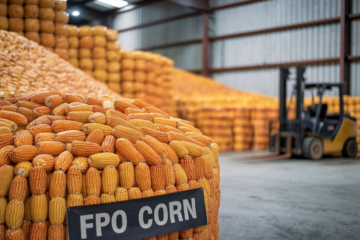Introduction
When it comes to Italian cuisine, pasta plays a leading role, and one of the most delicate and delicious types is tagliolini. Known for its thin, ribbon-like appearance, tagliolini is a versatile pasta that has become a favorite among food lovers across the globe. If you’re someone who appreciates the rich flavors of Italian dishes, you’re in for a treat! This article will dive deep into what makes tagliolini special, how to cook it perfectly, the best sauces to pair with it, and why it’s become such a culinary classic.
Whether you’re a home cook or a professional chef, learning about tagliolini can help you elevate your pasta dishes to the next level. We’ll cover the history of tagliolini, cooking tips, recipes, and even how to use it in creative ways.
Table of Contents
What is Tagliolini?
Tagliolini is a type of egg pasta that originated in the Italian regions of Piedmont and Emilia-Romagna. Its name derives from the Italian word “tagliare,” which means “to cut,” and this aptly describes how the pasta is prepared—by cutting fresh sheets of dough into long, thin strands. Unlike its thicker cousin, tagliatelle, tagliolini has a much finer width, often resembling angel hair pasta but with a slightly more robust texture.
Tagliolini dough is usually prepared using only two basic ingredients: flour and eggs. These ingredients are mixed to create a dough that is kneaded, rolled out, and cut into narrow ribbons. The result is a tender, golden pasta that can absorb sauces beautifully and is perfect for both light and hearty meals.
History of Tagliolini
Tagliolini has deep roots in Italian culinary traditions. While its exact origins are debated, it’s believed to have originated in the northern regions of Italy, particularly in Piedmont and Emilia-Romagna, which are known for their rich agricultural traditions. The use of eggs in tagliolini reflects the abundance of high-quality produce in these regions, which has led to the creation of some of Italy’s most iconic dishes.
Historically, tagliolini was often prepared for special occasions such as family gatherings or religious holidays. Over time, it became a staple in Italian households and restaurants, prized for its delicate texture and its ability to pair with a wide variety of sauces.
How to Cook Tagliolini Perfectly
Cooking tagliolini to perfection is essential to fully enjoying its flavor and texture. Because it’s such a thin pasta, it cooks very quickly compared to thicker varieties like fettuccine or pappardelle. Here’s a step-by-step guide to cooking tagliolini:
Ingredients:
- 250 grams of pasta
- 4 liters of water
- 1 tablespoon of salt
Instructions:
- Boil the Water: Tagliolini dough is usually prepared using only two basic ingredients: flour and eggs. You’ll want about 4 liters of water for every 250 grams of tagliolini.
- Add Salt: Once the water is boiling, add a tablespoon of salt. This is crucial for flavoring the pasta as it cooks.
- Cook the Tagliolini: Gently add the tagliolini to the boiling water. Because it’s a fresh pasta, it will only take 2-4 minutes to cook. If you’re using dried tagliolini, follow the package instructions, but it typically cooks in 5-7 minutes.
- Check for doneness. Stir occasionally to prevent the strands from sticking together. The pasta should have a firm texture when you bite into it, known as ‘al dente.
- After cooking the pasta, drain it while keeping a cup of the pasta water for later use. This starchy water can be used to help thicken the sauce you’re about to add.
Best Sauces for Tagliolini
The beauty of tagliolini lies in its versatility. Due to its fine texture, it pairs well with a wide range of sauces. Here are some of the best sauces to complement tagliolini:
1. Tagliolini al Tartufo (Truffle Sauce)
One of the most luxurious ways to enjoy tagliolini is with truffle sauce. The rich, earthy flavors of truffle oil or fresh truffles are a perfect match for this delicate pasta. Simply toss cooked tagliolini with a truffle-infused butter sauce, and you have a gourmet meal in minutes.
2. Tagliolini al Limone (Lemon Sauce)
Tagliolini al Limone offers a bright and invigorating choice with its straightforward yet delicious flavor. The tanginess of lemon combined with a touch of cream and Parmesan cheese creates a beautifully balanced sauce that enhances the pasta without overpowering it.
3. Tagliolini ai Frutti di Mare (Seafood Sauce)
Tagliolini is also perfect for seafood lovers. Tossing the pasta with a medley of fresh seafood—such as shrimp, clams, and mussels—in a light tomato or garlic sauce creates a dish that’s bursting with flavor.
4. Tagliolini alla Panna (Cream Sauce)
For those who prefer something richer, tagliolini alla panna (cream sauce) is a decadent option. A simple cream sauce with Parmesan, butter, and a touch of nutmeg is all you need to create a comforting, creamy dish.
5. Tagliolini al Pesto
Pesto is another fantastic sauce to pair with pasta. The bright, herbaceous flavor of basil pesto coats the thin strands beautifully, making every bite a flavor explosion. You can also experiment with different types of pesto, such as sun-dried tomato or walnut pesto.
Homemade Tagliolini Recipe
If you’re feeling adventurous, making homemade tagliolini is a rewarding experience that allows you to control the quality and freshness of your ingredients. Here’s an easy recipe you can make at home.
Ingredients:
- 200 grams of 00 flour (or all-purpose flour)
- 2 large eggs
- A pinch of salt
Instructions:
- Prepare the Dough: On a clean work surface, mound the flour and create a well in the center. Break the eggs into the hollow and sprinkle a bit of salt. Use a fork to gradually incorporate the flour into the eggs, then knead the dough until smooth and elastic (about 10 minutes).
- Rest the Dough: Wrap the dough in plastic and leave it to rest for half an hour.
- Roll Out the Dough: Using a rolling pin or pasta machine, roll out the dough until it’s very thin (about 1-2 millimeters thick).
- Cut the tagliolini: Fold the dough sheet in half and use a sharp knife to cut thin strips, about 2-3 millimeters wide. Unfold the strips and dust them with flour to prevent sticking.
- Cook: Follow the cooking instructions provided earlier, and you’ll have fresh tagliolini ready to enjoy.
Creative Ways to Serve Tagliolini
While pasta is often served with traditional Italian sauces, there are plenty of creative ways to enjoy this pasta. Here are a few ideas:
1. Tagliolini Salad
For a fresh twist, try serving tagliolini cold in a pasta salad. Toss the cooked pasta with cherry tomatoes, olives, mozzarella, and a light vinaigrette for a delicious summer dish.
2. Tagliolini in Broth
Tagliolini can be savored in a warm, flavorful broth for a cozy experience. This is a traditional preparation often served in the colder months. The fine strands of pasta soak up the flavors of the broth, making for a warm and satisfying meal.
3. Tagliolini Stir-Fry
Although not traditionally Italian, tagliolini can be used in a stir-fry with vegetables, tofu, or meat for a fusion dish. The pasta’s thin texture works well with quick-cooking ingredients and Asian sauces.
FAQs about Tagliolini
1. What is the difference between tagliolini and tagliatelle?
Though both tagliolini and tagliatelle are ribbon-shaped pastas, tagliolini is considerably more slender compared to tagliatelle. Tagliolini is typically around 2-3 millimeters wide, whereas tagliatelle can be 6-10 millimeters wide.
2. Can I use dried tagliolini instead of fresh?
Yes! Dried tagliolini is widely available and is a great option if you don’t have time to make fresh pasta. However, fresh tagliolini offers a more delicate texture and flavor.
3. What is the best sauce for tagliolini?
Tagliolini pairs well with light sauces like truffle, lemon, and seafood sauces. It also works beautifully with creamy or pesto-based sauces.
4. Can I freeze pastalini?
Yes, you can freeze fresh pasta. Lay the pasta out on a baking sheet to freeze individually before transferring it to an airtight container. When you’re ready to cook it, no need to thaw—just cook it directly from frozen.
5. Is pasta gluten-free?
Traditional tagliolini is made with wheat flour and eggs, so it is not gluten-free. However, gluten-free versions can be made using alternative flours like rice flour or gluten-free pasta blends.
Conclusion
Tagliolini is a delightful pasta that deserves a place in your culinary repertoire. Whether you’re making it fresh or using dried pasta, this versatile noodle can be dressed up with a variety of sauces or used in creative ways. Its fine texture and rich history make it a must-try for any pasta lover.
From traditional Italian recipes to modern twists, tagliolini offers endless possibilities for delicious meals. So the next time you’re in the mood for pasta, reach for tagliolini and explore the many ways you can enjoy this classic Italian dish!
You Can See Latest Updates On: Leg Warmers



